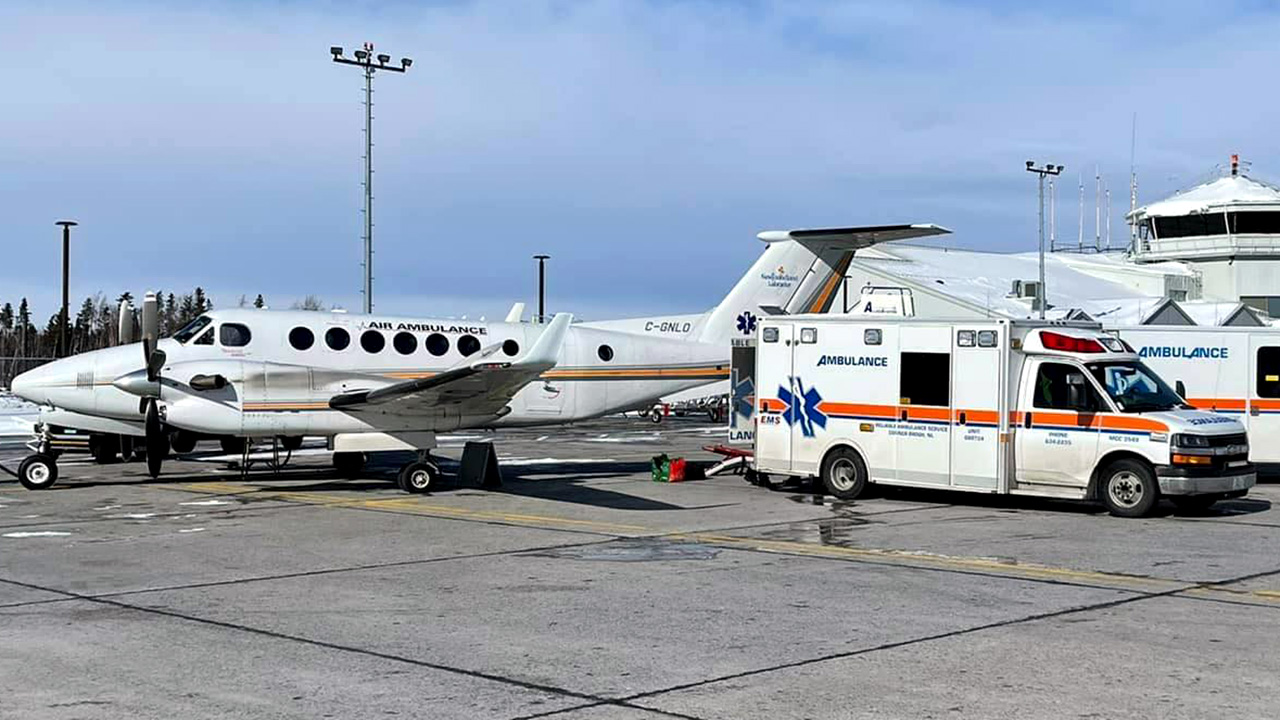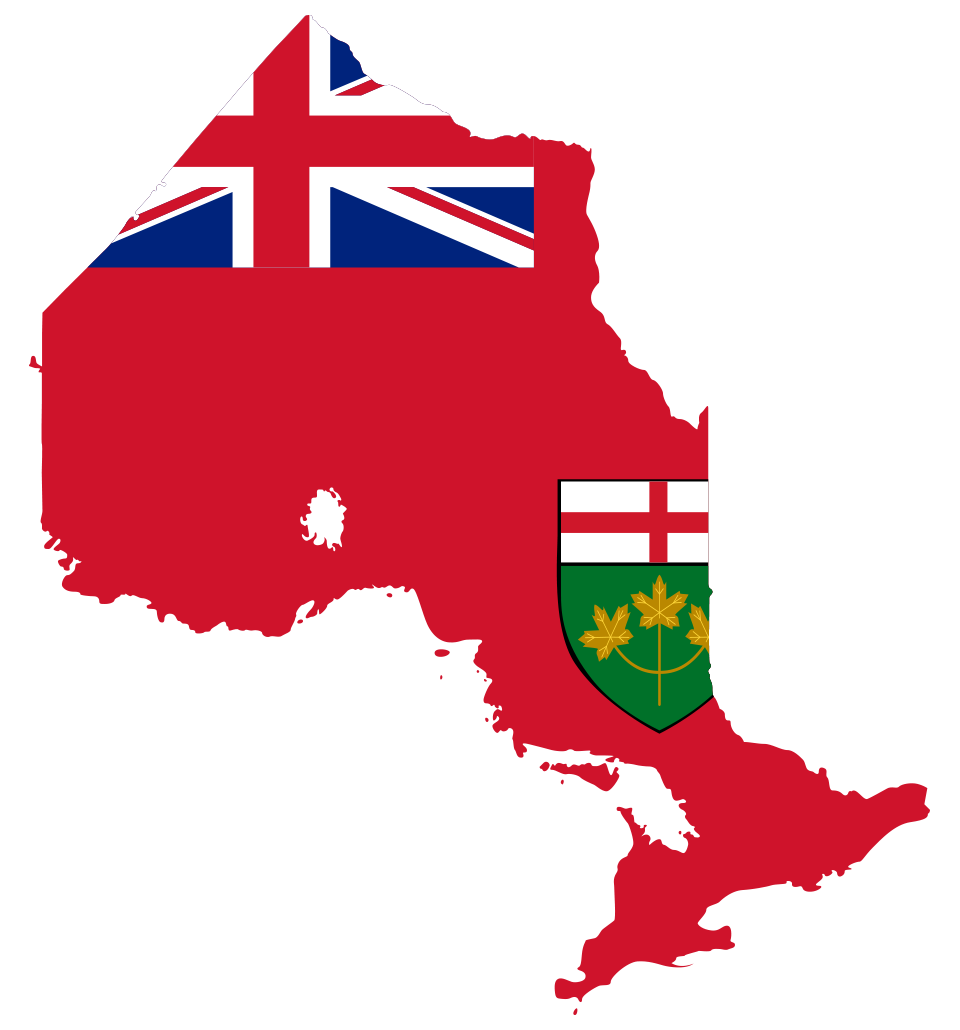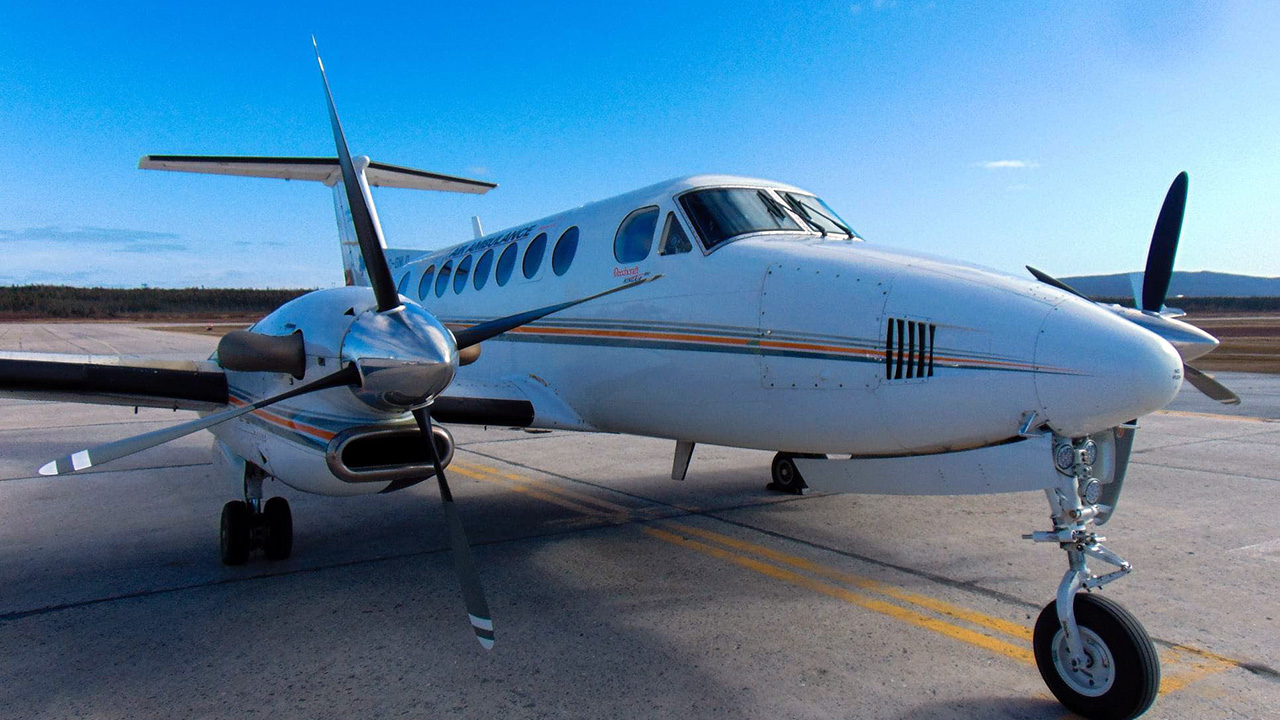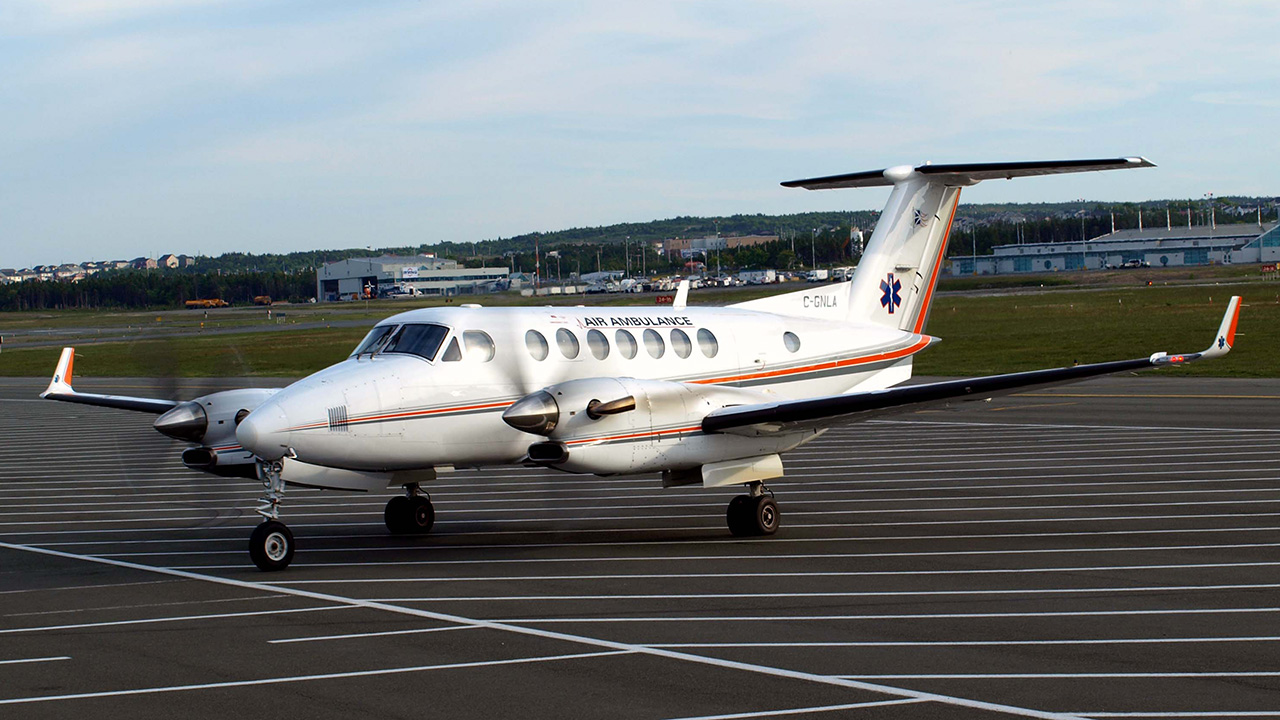
Air Ambulance Service
Our public air ambulance service is a lifeline for many people in our province – a vital part of our healthcare system. Yet it is chronically underfunded. This has created an opportunity for the private sector to pick up the slack – at almost twice the cost per patient as the public sector. Investing in our public air ambulance service would not only save money – it would improve patient outcomes.
Currently there is some discussion about further privatization of our air ambulance service. This makes no sense as the cost of having the private sector transport a patient is almost twice as high as the public sector cost.
Tell your MHA No!
You can send an email
How the system currently operates

Three provincial government agencies share the responsiblities and costs of operating our province’s air ambulance service. The Department of Transportation and Works is responsible for providing public-sector pilots, maintenance, and dispatch services. The Department of Health and Community Services is responsible for covering the cost of private-sector air ambulances that currently supplement the public air ambulance service. Eastern Health determines the specific requirements for patient transport and provides the required Medical Flight Specialists and Neonatal Transport Team.
Our provincial government owns 2 air ambulances. It also contracts three additional air ambulances from private sector operators – two from EVAS and one from PAL. All aircraft are operated by two crew members.
The air ambulance service in St. John’s provides coverage around the clock, seven days a week, while the service in Goose Bay provides coverage twelve hours a day, seven days a week.
Private sector involvement
Private-sector air ambulances are used when government employees are unavailable or when maintenance is required on one of the government air ambulances.
The operators of the private-sector air ambulances – PAL and EVAS – are paid a monthly retainer over and above what they are paid for the patients they transport.
Out-of-province patient transfers are also carried out by private-sector out-of-province air medivac companies.


Medical staffing
Each flight is accompanied by Medical Flight Specialists (stationed in St. John’s and Goose Bay) or the Janeway Neonatal Transport team (based in St. John’s). When no medical flight team is available, the regional health authorities provide medical escorts.
Budget
Since 2012-13, the provincial government’s annual budget for operating the air ambulance service has remained close to constant at approximately $6 million; however, until the pandemic the number of patients requiring transportation by air ambulance was increasing.


Even Ontario’s Ford government knows better than to privatize
Privatizing health care is never good for outcomes. When profit is the motive in health care, it is the patients that suffer.
Even the Ontario government under Premier Ford knows that privatizing air ambulance services is a bad idea. In 2019 when documents were leaked suggesting the Ford government was looking at outsourcing Ontario’s air ambulance transport services, the Minister of Health was quick to give public assurances that the service would not be privatized.
SOURCE:
Jones, A. (2019, February 4). Health inspections, air ambulance won’t be privatized, minister says. CTV.
Privatization of air ambulance service doesn’t add up
In Newfoundland and Labrador, privatizing the air ambulance service makes no sense. A simple analysis of the data makes it crystal clear – reducing our province’s dependence on the private sector to provide supplemental air ambulance transport services will actually save money and improve the province’s air ambulance service.
The following information was obtained through an access-to-information request. (ATIP-HCS-153/2020)


In 2020-21, the provincial government’s air ambulance service transported 67.5% of the patients, flew 61.1% of the flight hours, and cost 51.9% of the money government spent on air ambulance services in that fiscal year. The average public-sector cost per patient was $5,751.
Over the same period, private sector PAL transported 21.0% of the patients, flew 14.7% of the flight hours, and cost 21.0% of the money government spent on air ambulance services in that fiscal year. The average PAL cost per patient was $13,703 – more than double the cost of the public sector.
Over the same period, private sector EVAS transported 27.1% of the patients, flew 24.2% of the flight hours, and cost 27.1% of the money government spent on air ambulance services in that fiscal year. The average EVAS cost per patient was $9,608 – more than 1.5 times as much as the public sector.
So in 2020-21, the average public sector cost per patient was $5,751 while the average private sector cost per patient was $11,048 – almost double the cost of the public sector.
In 2019-20, the public sector air ambulance service transported 70.8% of the patients, flew 61.9% of the flight hours, and cost 61.9% of the money government spent on air ambulance services in that fiscal year. The average public sector cost per patient was $5,337.
In that same period, private sector PAL transported 11.1% of the patients, flew 15.5% of the flight hours, and cost 21.0% of the money government spent on air ambulance services in that fiscal year. The average PAL cost per patient was $13,751 – 148% more than the public sector.
In that same period, private sector EVAS transported 18.1% of the patients, flew 22.6% of the flight hours, and cost 21.2% of the money government spent on air ambulance services in that fiscal year. The average EVAS cost per patient was $7,899 – 48% more than the public sector.
So in 2019-20, the average public sector cost per patient was $5,377, while the average private sector cost per patient was $10,123.77 – almost double the cost of the public sector.
Clearly, the public-sector service is more cost effective. Further privatization would make no sense. That doesn’t mean there aren’t ways to improve our province’s public air ambulance service.
So, what’s the solution?
There are simple actions that could be taken to make our province’s air ambulance service more cost-effective and efficient.



Allowing Air Dispatch, not Eastern Health to determine how and when air ambulances are dispatched
Currently, Eastern Health not only determines what medical support is needed, it dictates what aircraft and pilots are used based on its desire to avoid paying overtime to its employees who accompany patients on air ambulances. This frequently triggers the need to use more costly private-sector aircraft and pilots (paid for by the Department of Transportation). Allowing the Department of Transportation’s Air Dispatch to determine the best way to provide patient transport based on Eastern Health’s medical requirements would reduce the use of public-sector air ambulances and save money
Chronic underfunding a way for government to create dissatisfaction
When a government wishes to privatize a public service, it is quite common to provide fewer resources than are actually needed to cause public dissatisfaction. In this case, the provincial government needs to hire more pilots. Doing so would reduce costs and improve service.
Hiring three more public-sector pilots would reduce reliance on pricier private-sector air ambulances
Lack of public-sector pilots to fly out of St. John’s triggers most of the use of private-sector aircraft. Lack of available public-sector pilots in Goose Bay is the second major trigger.
If the provincial government hired two more pilots in St. John’s and one more in Goose Bay, it would reduce costs and improve service. Hiring these three additional public-sector pilots would cut the need from two supplemental private-sector aircraft and crew to one supplemental private-sector aircraft and crew.
Hiring three more pilots, even if salaries are paid at top of scale and the cost of mandatory training is included, would cost the Department of Transportation $332,643 a year. Transferring that amount from Health and Community Services’ budget to Transportation and Infrastructures’ budget would immediately save the provincial government $747,357 a year while providing better service to the people of our province.
